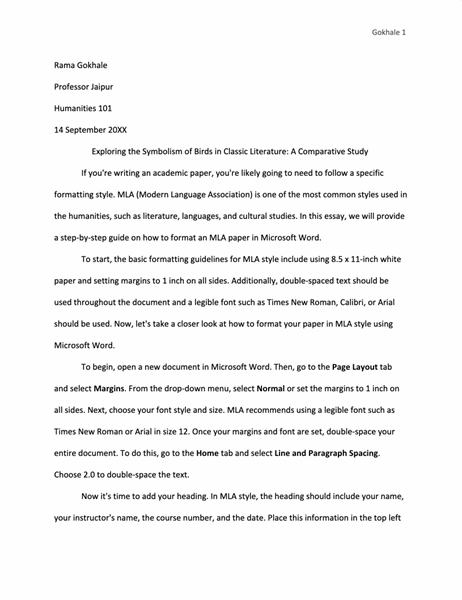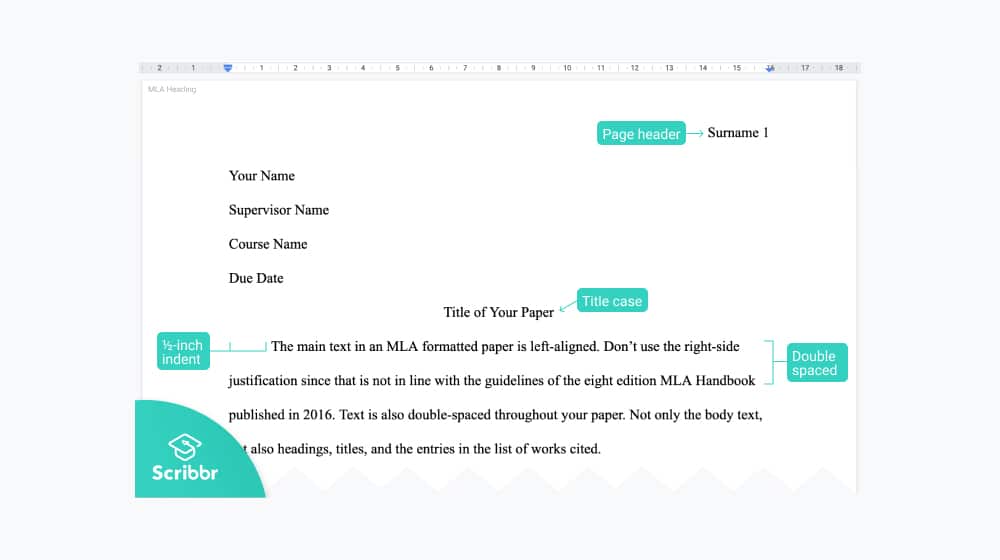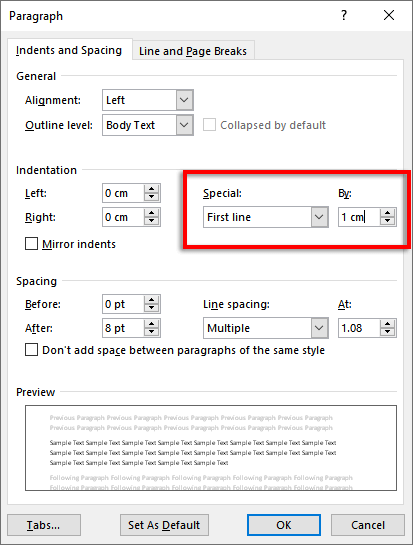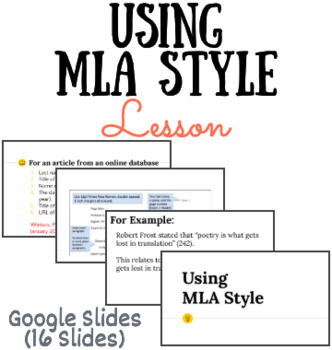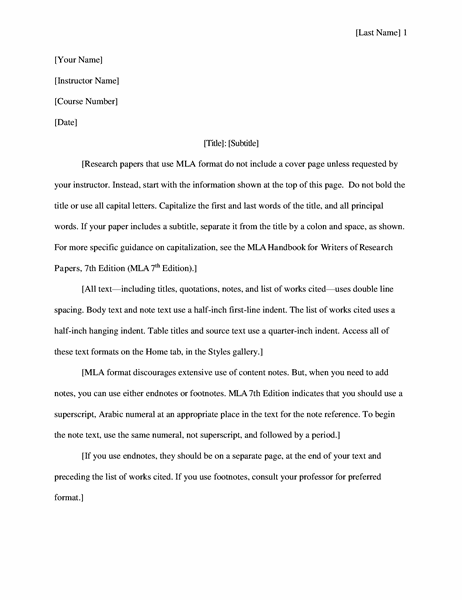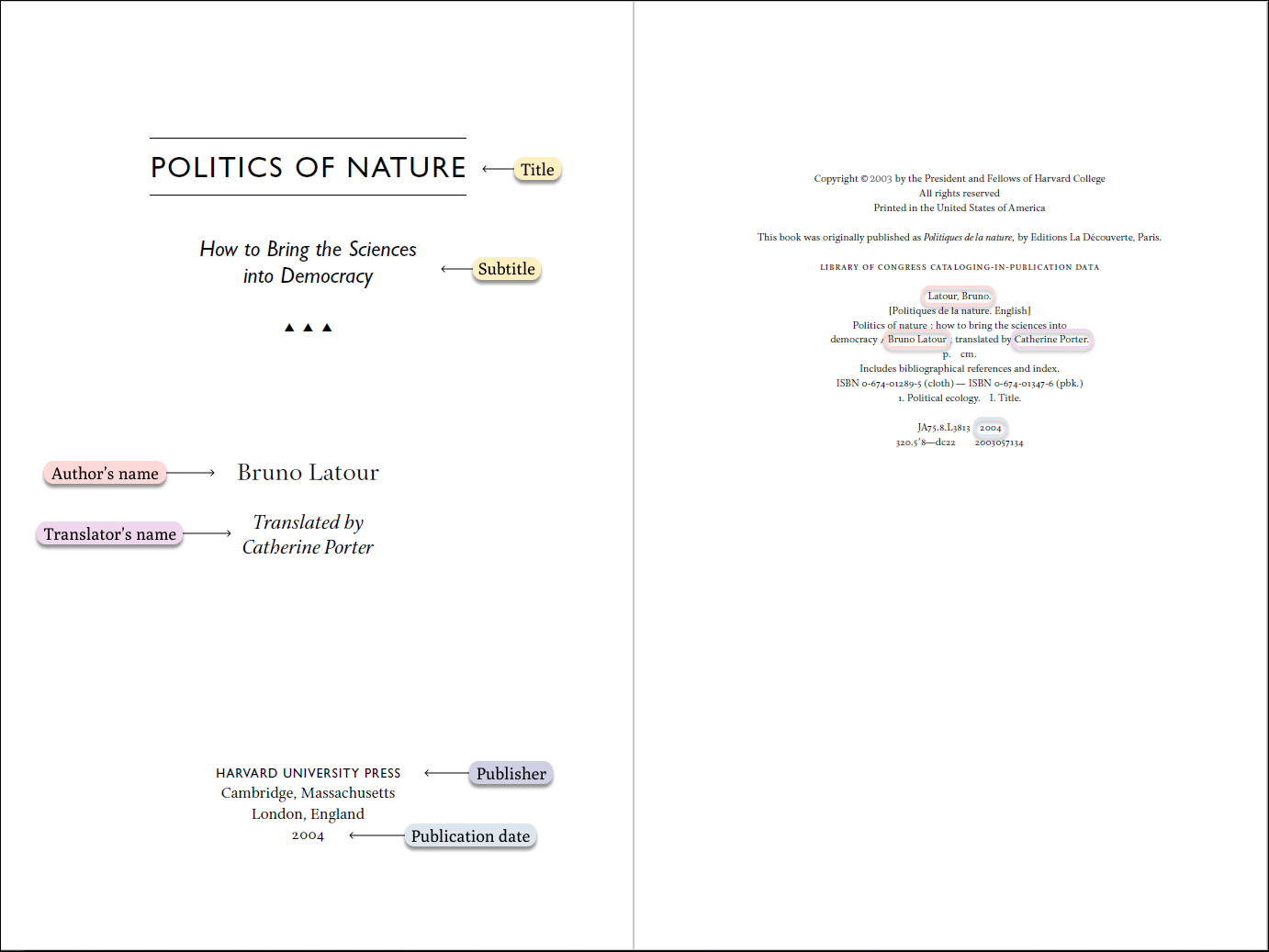The Modern Language Association (MLA) style is a widely used citation style for academic writing in the humanities, particularly within the field of literature. It provides a set of guidelines for formatting papers and citing sources, with the goal of creating consistency and clarity in scholarly communication.
To format a paper in MLA style, you should follow the guidelines outlined below:
- Use a standard font, such as Times New Roman or Arial, in size 12.
- Set the margins to one inch on all sides.
- Double-space the entire document, including the works cited page.
- Indent the first line of each paragraph by half an inch using the tab key. Do not use extra space between paragraphs.
- Place the page numbers in the top right corner of the page, preceded by your last name.
- Include a header with your last name and the page number on each page, except for the first page.
- Place the title of your paper in the top center of the first page. It should be in the same font and size as the rest of the text, with no bold or italicized words.
- Create a works cited page at the end of the paper. This should include a list of all the sources you used, formatted according to MLA guidelines.
When citing sources in MLA style, you should include the author's name, the title of the work, the publication information, and the page numbers (if applicable). In-text citations should be placed within the body of the paper, and should include the author's name and the page number of the source. For example:
According to John Smith, "the evidence suggests that the trend is likely to continue" (34).
On the works cited page, the source should be listed in alphabetical order by the author's last name. The format for a book citation looks like this:
Smith, John. The Trend Continues. New York: Publishers Inc., 2010.
For more detailed guidelines on citing specific types of sources, such as websites or multimedia, you can consult the MLA Handbook or refer to the MLA website.
In summary, the MLA style is a widely used citation style that provides guidelines for formatting papers and citing sources in the humanities. By following these guidelines, you can help ensure that your academic writing is clear, consistent, and properly attributed to the sources that you have used.
